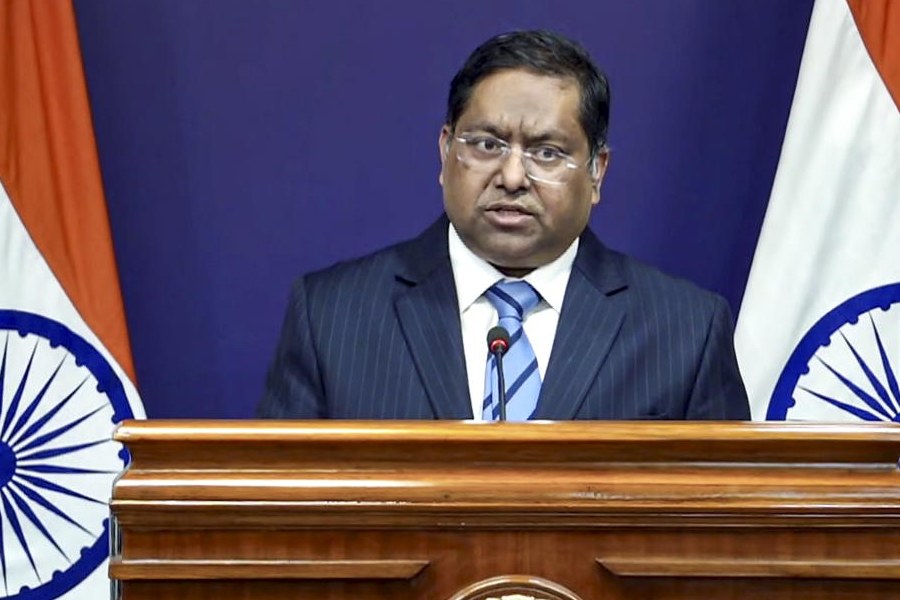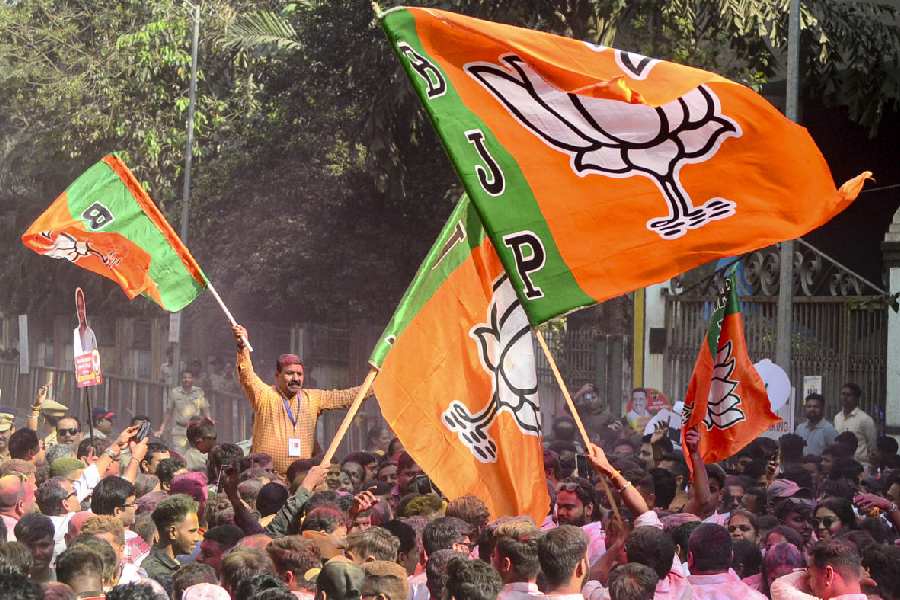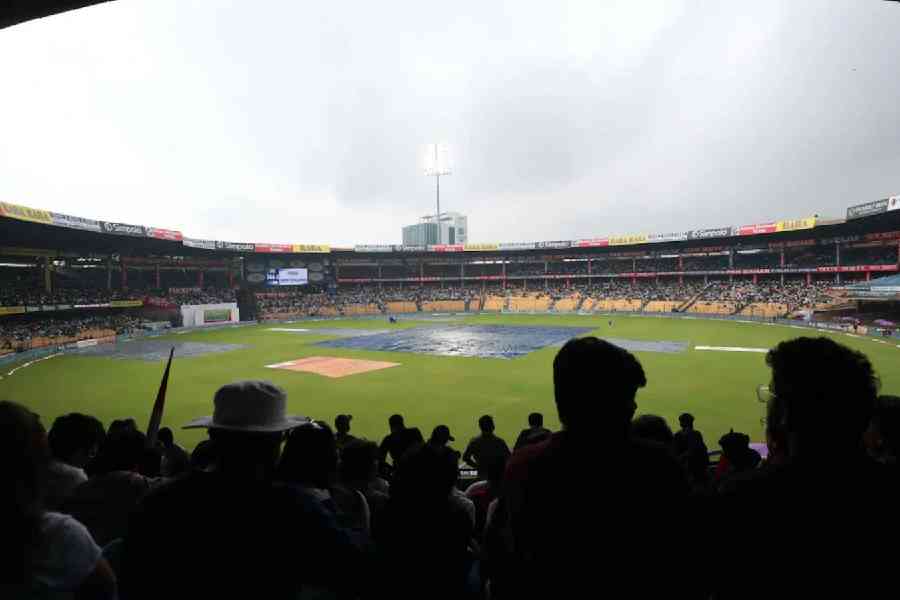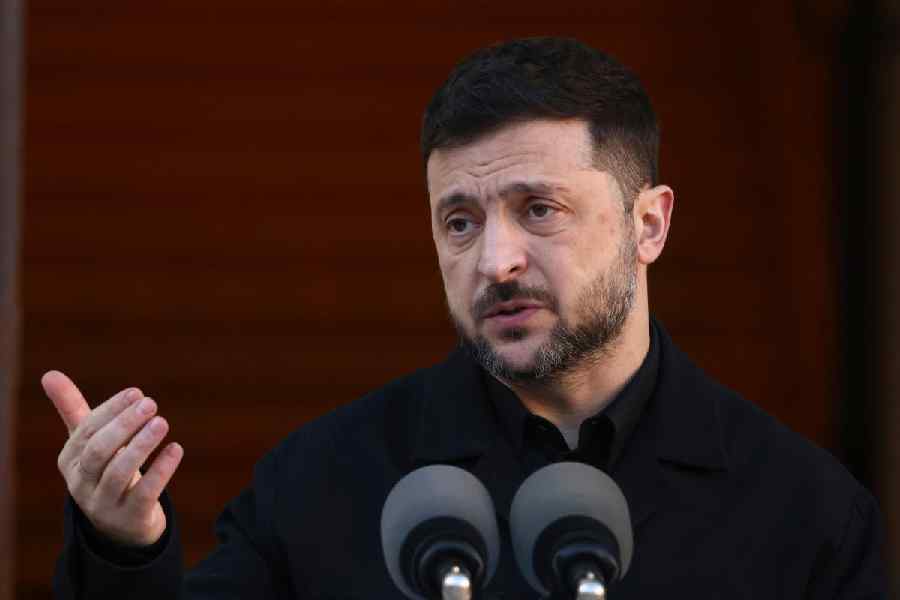 |
Monks in saffron chant mantras in the dark. A beam of light slowly falls on them. The monks move in a circle, and then, from the centre, a very young Ashoka emerges, clad in a dhoti and paying homage to the priests.
The burly man who has taken his seat in the dimly lit empty auditorium is keenly observing the members of the Chorus Repertory Company as they rehearse the opening scene of his play Uttar Priyadarshi at Delhi’s Shri Ram Centre, a theatre in the heart of the city. Minutes later, the actors are queuing up — this time to seek the blessings of the man in their midst, Ratan Thiyam.
The doyen of Indian theatre and the founder of the repertory gives them a quick lesson. “If you don’t have discipline and professionalism, you fail as artistes,” Thiyam says.
He has both — which is possibly why he is one of India’s best known theatre directors today. A playwright, he is also the backbone of the modern Indian theatre. “We had all really worked hard and created an identity for Indian theatre. From a musician to a playwright to an actor — everyone contributed to the movement,” he says, referring to what’s known as the Theatre of Roots, the movement that shaped modern Indian theatre.
Thiyam, who has produced some 60 plays over 35 years, is in Delhi to receive the Sangeet Natak Akademi fellowship for outstanding contribution to theatre. He has been flooded with awards over the years, but feels that the government needs to do more for the arts than just honour artistes.
“Giving away awards and honours is one thing while promoting art is another. In this country, there is no political will to promote art,” Thiyam, 65, says. “In India, many talented actors have no place to go.”
His voice is a deep baritone, and he speaks haltingly in English. He looks tired, and it seems that a part of his mind is on the play that is flowing in front of him. Through the interview, he is interrupted by people — actors and others — who want to have a quick word with him.
There’s much they can learn from him, for Thiyam is not just Manipur’s best known director and a former head of the National School of Drama, he has also seen the best of theatre. In his youth, he came across the works of — and interacted with — directors such as Utpal Dutt, Sambhu Mitra and Ajitesh Bandopadhyay.
“I saw a lot of eagerness, enthusiasm and courage in them to bring a change in Indian theatre. They were the real force behind the movement,” he says adding that Bandopadhyay had often invited him to Calcutta to watch Bengali plays.
The director’s relationship with Bengal is an old one. He was born in West Bengal’s Nabadwip because his Manipuri dancer parents — Thiyam Tarunkumar and Bilashini Devi — used to perform mostly in Bengal. As a child, he used to travel with his parents’ dancing troupe. “I was brought up in costume boxes,” he laughs, stroking his short, white beard.
That was also when he came in touch with the works of Rabindranath Tagore — whose plays he has been directing over the years. Apart from producing Shakudaba Shaknaiba based on Tagore’s Raja, he has translated many of his poems from Bengali into Manipuri. “I have always looked at Tagore as a spiritual guru,” he says.
Thiyam moved from Bengal to Manipur when he was in his teens. He lived with his grandparents in his ancestral house in Imphal’s Uripok and went to the Johnstone High School. By the time he was 14, he said he had starting hating everything about the performing arts, mainly because of all the travelling that his parents had to do. “I swore that I would never become a performing artiste,” he says.
What he wanted to do was paint. At 15, he also enrolled in a school of art in Imphal. Painting, he holds, is still his first love. In his plays such as Andha Yug, Chinglon Mapan Tampak Ama and even in Uttar Priyadarshi, every scene looks like a painting — showcasing a combination of colour, music and movement.
Most of his plays are on epic themes, dealing with mythology while focusing on issues of personal responsibility and issues such as good and evil. “I love to experiment with the different philosophies of life. I am into the continuous process of discovering and re-discovering oneself and the art of theatre.”
That Thiyam’s whole self is devoted to theatre is evident. He deals with every aspect of a play — from writing the script to directing it, to composing music and creating the set designs. Manipur figures prominently in his works — including elements such as Manipuri raas leela, thang-ta (Manipuri martial art), pung-cholom (acrobatic dance with drums), nata sankirtana (folk dance form) and wari liba (oral storytelling). “Tradition — with rituals and art — is so rich in the state that it cannot be taken away from theatre,” he says.
Ironically, Thiyam never thought he’d do theatre. He wanted to be a writer and had started penning poems and short stories in his teens. At the age of 17, he even published a compilation of short stories Lonna Haigey Tumimmatao.
Soon he was bringing out the literary journal Lasani and a cultural magazine Reetu. Then one day, when he was in his early 20s, a group of young actors in Imphal asked him to write a play for them.
He adapted and dramatised the Bengali novel Nabab Nandini by Damodar Mukhopadhyay. The director of the play asked for his assistance in direction. He agreed. Then, when one of the lead actors left the play four days before the show, he was coaxed into taking on his role.
“I had no choice but to agree. Surprisingly, everyone appreciated my work,” he recalls.
Gradually, he started acting in Manipuri plays produced by local theatre groups. The growing interest in theatre led him to the National School of Drama (NSD), which he joined in 1971.
“I wanted to brush up my Hindi and Urdu speaking skills, so I joined the acting course,” says Thiyam, who loves reading the works of Hindi poet Udayan Vajpeyi.
At NSD, Thiyam came under the spell of director Ebrahim Alkazi, whom he describes as his mentor. After watching Thiyam’s Chinglon Mapan Tampak Ama (Nine Hills One Valley), Alkazi had said to him: “With this one play, you’ve managed to outdo what I did in my entire life as a theatre artiste.”
But the student gives all the credit to the master. “He always told us that we had to work hard to get what we wanted. I wish I could be somewhere near him,” he says.
Thiyam returned to NSD as its director in 1987. He laments that the institute has failed to emerge as a centre of excellence even 54 years after its establishment.
“NSD has remained the same as it was in the 1970s,” Thiyam rues. “Regional centres of NSD should be opened for spotting talent from various parts of the country and this school should be transformed into a centre for advanced learning where one can do good research in theatre. NSD should produce more professionals,” he says.
It was to give theatre a boost that he set up his repertory company in 1976. But it was not an easy start, especially in the strife-torn Manipur.
“Initially, I couldn’t pay a salary to my actors as there were barely any sponsors in Manipur. All I could manage was a cup of tea for my actors. Later, when we started getting sponsors while performing in several theatre festivals in Delhi, I could pay them a monthly salary of Rs 40,” he recalls.
Some of his best Manipuri productions include Chakravyuha, Lengshonnei (an adaptation of Bertolt Brecht’s Antigone) and Ritusamharam (based on Kalidasa’s work). Over the years, a great many awards have been bestowed on him, including the Indo-Greek Friendship Award in 1984, Edinburgh’s Fringe Firsts Award in 1987 and the John D. Rockefeller award in 2008. His productions have travelled to many countries such as the US, Thailand, the former Soviet Union, Australia, New Zealand and Japan.
A visiting faculty member at New York’s Fordham University, Thiyam has always been vocal on social and political issues. It was to register his protest against the government’s extension of a ceasefire with the militant NSCN (IM) group that he returned the Padma Shri in 2001.
“It was a small protest to bring to the notice of the government that what is happening in the state is absolutely wrong,” he says.
But why has Manipur’s Irom Sharmila — on a hunger strike for over 12 years in protest against an armed forces act in place in Manipur — not figured in his works or protests?
“Irom Sharmila is always there on my mind,” he promptly replies. “But there has to be a strong script, too, for a good play on her.”
Thiyam is married to Damayanti Devi, a former lead actress in his company. He has three children — son Thawai is a co-ordinator in his repertory company, Menaka is a filmmaker in Manipur and Manasi is married and lives in Bangalore. When he is not working on a play, he tries to spend time with his grandson and granddaughter.
He listens to music — from Manipuri rock to bhajans — but plans to go back to his first love. “I want to paint all over again,” Thiyam says. But then, the stage has always been his canvas.










